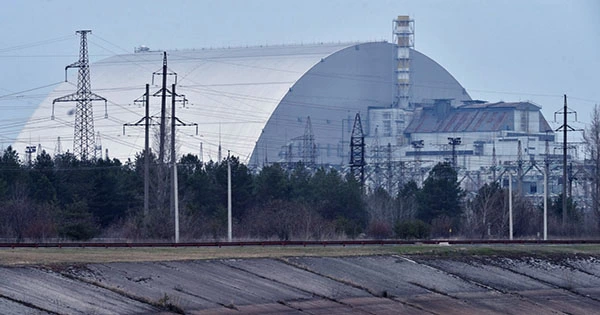Russia has invaded Ukraine, hitting key cities from across the common border in Belarus. The Chernobyl Nuclear Power Plant, which is located in the abandoned city of Pripyat, is one of their objectives. That’s where the world’s worst civil nuclear tragedy occurred. According to Ukraine’s president, Russian troops are attempting to assume control of the abandoned nuclear power station. This comes just hours after Russian President Vladimir Putin launched an invasion of Ukraine on a large scale.
“Occupation forces from Russia are attempting to take control of the Chornobyl nuclear power station. In a statement, Volodymyr Zelensky said, “Our defenders are offering their life so that the tragedy of 1986 will not be repeated.” “This is a declaration of war on Europe as a whole.” The exact number of victims and the scope of the assault are unknown at this time.
This revelation will raise worries at a time when many are pushing for a reduction in Europe’s reliance on Russian fossil fuels and increased investment in renewable and nuclear power (which is considered as a low-cost and vital step toward decarbonizing the European economy). Europe is still haunted by the Chernobyl accident. Because of the Soviet Union’s shortcomings in dealing with the tragedy in 1986, 30 people died shortly after the reactor meltdown, and many more may have had their lives cut short in the decades that followed.
The greatest nuclear disaster in history occurred on April 26, 1986, and it is still rumbling today. Chernobyl, or simply Chernobyl, was a watershed moment in the Cold War, the last days of the Soviet Union, and humanity’s use of nuclear power. It’s also become a notorious reminder of the dangers of tinkering with nuclear power, as well as the unintended consequences of human error and bureaucratic inefficiency.
The tragedy occurred near the city of Pripyat in what was then Soviet Ukraine, at the Chernobyl Nuclear Power Plant. The site is now located near the Ukraine–Belarus border in northern Ukraine. Engineers at the plant were (ironically) conducting a safety test to see how to cool the core of reactor 4 in the case of a power interruption in the early hours of Saturday, April 26, 1986.














